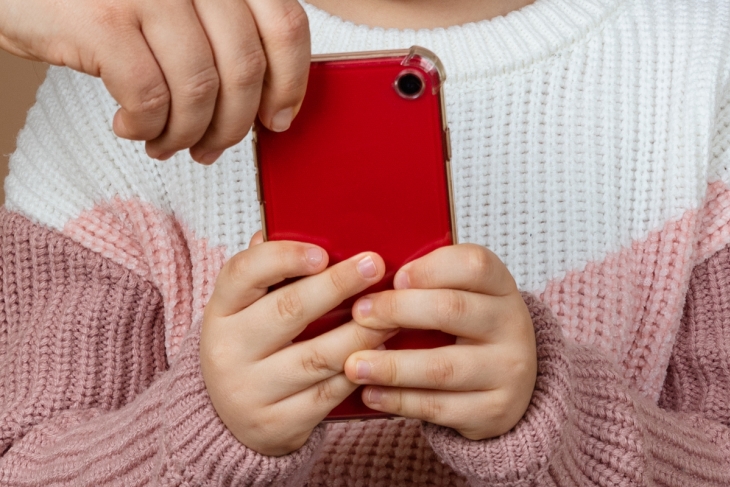It seems every day that yet another story hits the headlines about a school banning phones. Of course, the large majority of schools had nominal prohibitions previously, but they left enforcement up to teachers, which meant most students still slipped them out during class, at lunch, and in the halls. Now more schools are opting towards magnetically sealed bags or locking phones away in closets before the first bell rings.
Countless districts, states, and even entire countries have announced and tried to implement such bans. After a few semesters with these policies, researchers have had sufficient time to study their effects, and results from those studies are starting to roll in.
Most recently, researcher Sara Abrahamsson surveyed Norwegian schools to determine if and when they implemented a phone ban and linked that to Norwegian Registry data, which includes “information on each individual’s educational institution, health care take-up at specialist care, including psychologists, and general practitioners (GPs), middle-school grades set by students’ teachers and externally corrected exams, student’s overall GPA, and individuals’ choices of academic or vocational high schools.”
Schools implemented restrictions at different times, and Abrahamsson demonstrates that the implementation of smartphone bans was uncorrelated with either school characteristics such as teacher gender ratios or prior achievement, and uncorrelated with prior trends such as declining mental health or GPAs. These factors allowed for a quasi-experimental design, analyzing 477 middle schools between 2010 and 2018. From this analysis, she comes to five conclusions:
- Banning smartphones reduces the number of consultations for psychological symptoms by about 2–3 visits per child, per year.
- Banning smartphones lowers the incidence of bullying for both girls and boys.
- Banning smartphones results in girls making gains in both their GPA and externally graded mathematics exams, on the order of 0.22 standard deviations. For comparison, Abrahamsson notes that reducing class size by one student correlates to an improvement of about 0.00–0.05 standard deviations.
- These benefits are particularly strong for students from low socioeconomic backgrounds.
- The effects are particularly strong at schools with the strictest bans, requiring students to hand in or lock away their phones, not just place them on silent mode. Abrahamsson notes that, even on silent mode, phones can still pull at a student’s attention, distracting them as they wonder if someone messaged them, liked their status, or whatever else.
This study comes as researchers debate the broader effects of social media on teenagers. In previous years, it’s become more and more evident that social media is, in fact, a major cause of declining adolescent mental health. Even so, there’s still much debate over how significant of a driver they are and what’s to be done about them.
Just because something is bad doesn’t necessarily justify a strict prohibition. History is riddled with examples wherein prohibitions backfired (the temperance movement) or created unsustainable negative externalities (the war on drugs). Similarly, some school-level campaigns such as the D.A.R.E. program have only increased the rate of the behavior they tried to combat.
In the case of phone bans, however, this latest study is just one more entry to an expanding literature on the benefits of such policies. It’s worth noting that the p-values in this study are small—signifying a uncertainty in its conclusions—but as I’ve written about here before, several earlier analyses showed that limiting phone usage during class increases performance on both standardized test scores and end-of-course exams. As for non-academic benefits, researchers have found that, without phones, students exercise far more at recess, burning off energy, fostering physical health, and promoting later attention in class. In short, phone bans work.
From a personal perspective, I’ve seen the benefits. For a number of years, I volunteered at a summer camp that confiscated phones on day one. Students grudgingly handed them over, complaining that they’d “lose their streaks” (it has something to do with Snapchat). But in short order they were voicing appreciation for the time they could spend sitting in circles chatting with friends, without all eyes staring down. Few had experienced the simple pleasure of getting lost in thought because boredom had always prompted them to grab their phone. By week’s end, every single student—every single one—expressed some hesitation to check their phones when we handed them back. They’d learned to love being phone free.
Something of a pessimist as I am, I find this turnaround on phones a heartening trend. We’ve seen society-wide transformations before, movements that greatly improved the lives of young people. Campaigns against smoking that spread the message of its negative health effects and prompted bans in countless public space, for example, have led to a drastic decrease in smoking rates. A similar decline happened for teen pregnancy after policy initiatives, public messaging campaigns, and rhetoric from various political bully pulpits sought to combat the societal malady.
We can and should see a similar shift for teens and social media. Amid debates about highly technocratic, complex ed-policy initiatives with unclear benefits—mass testing, curricular overhauls, and others—banning phones is a simple, easily implemented, and clear win-win for our students, teachers, and society writ large.




